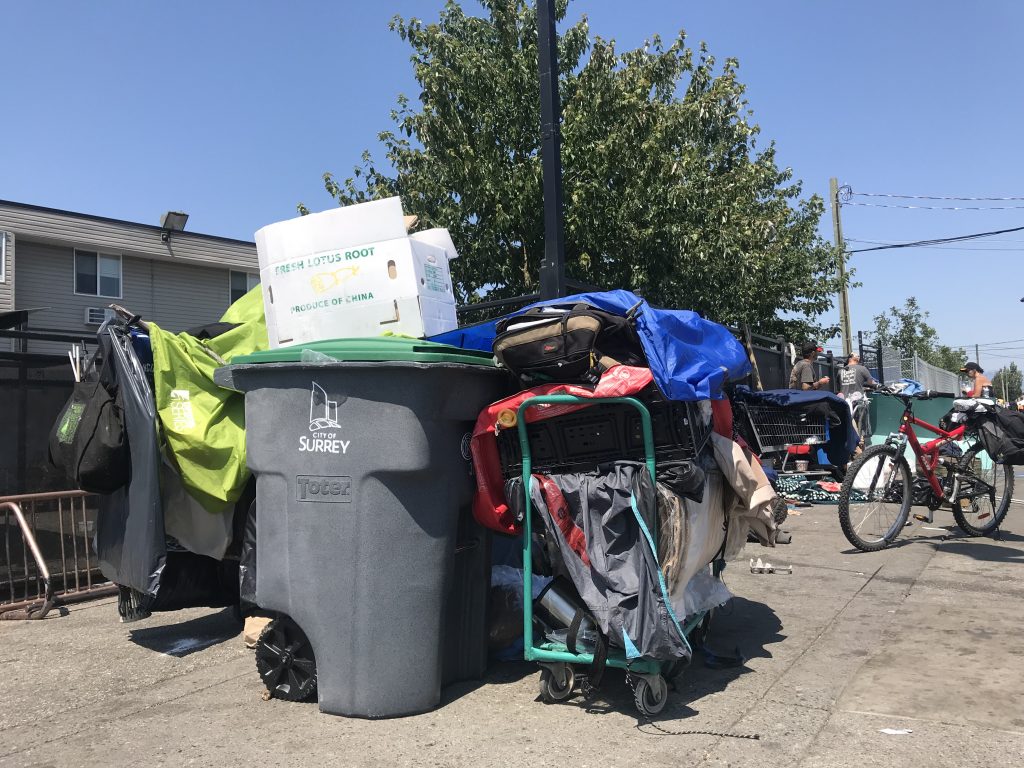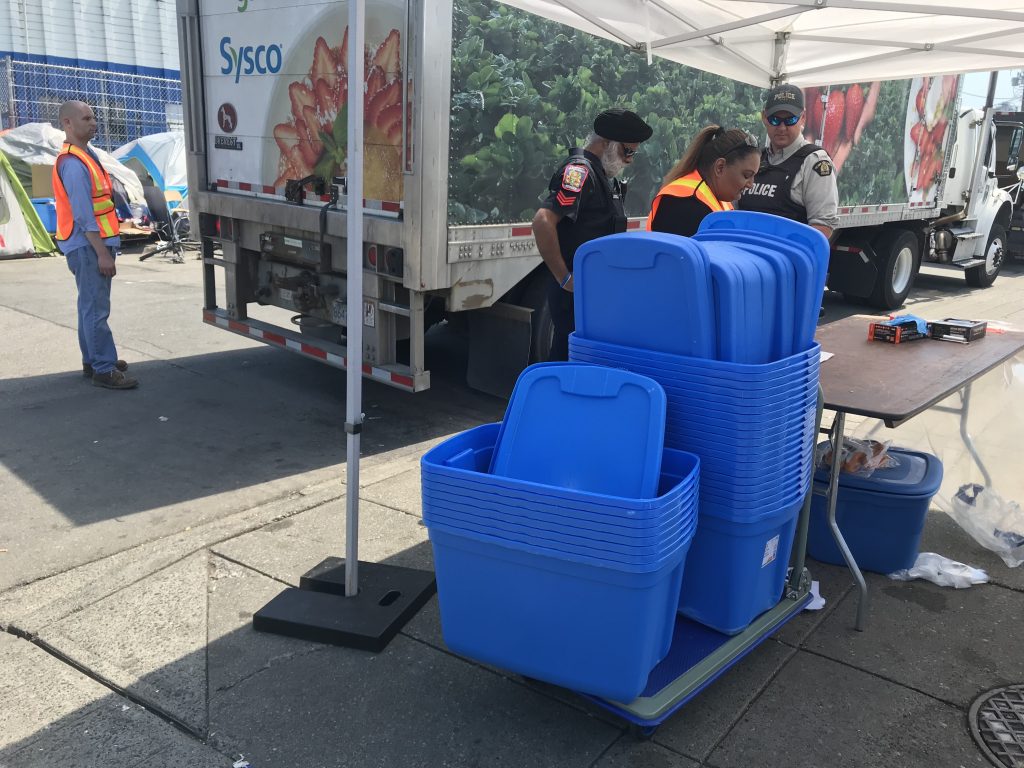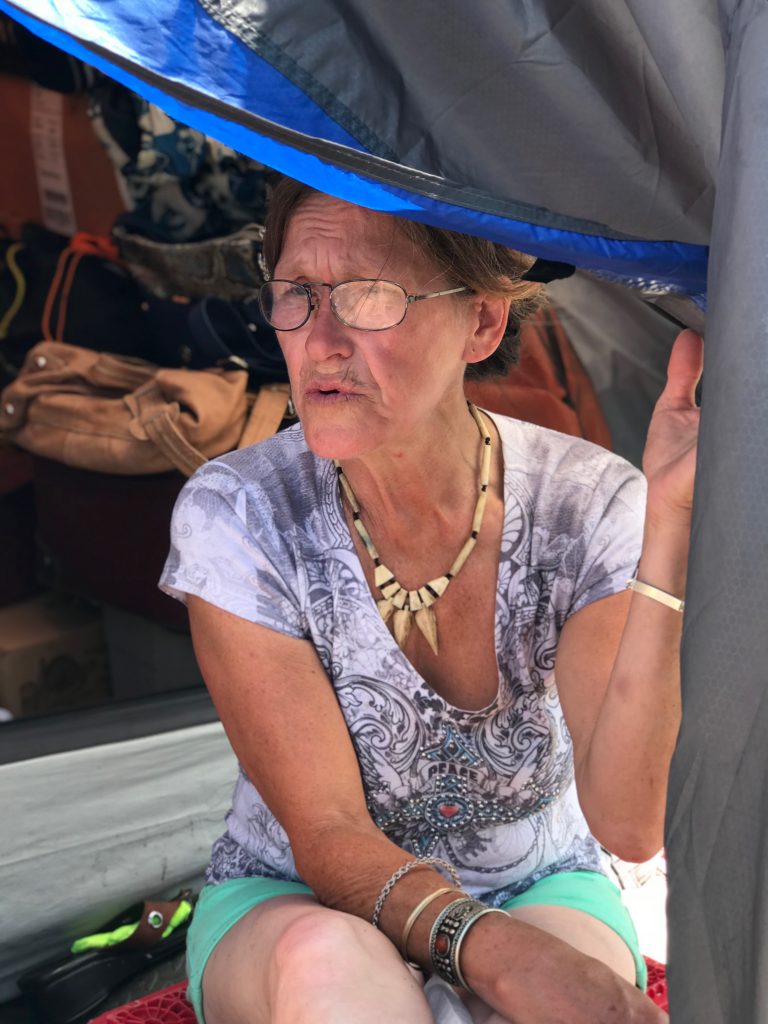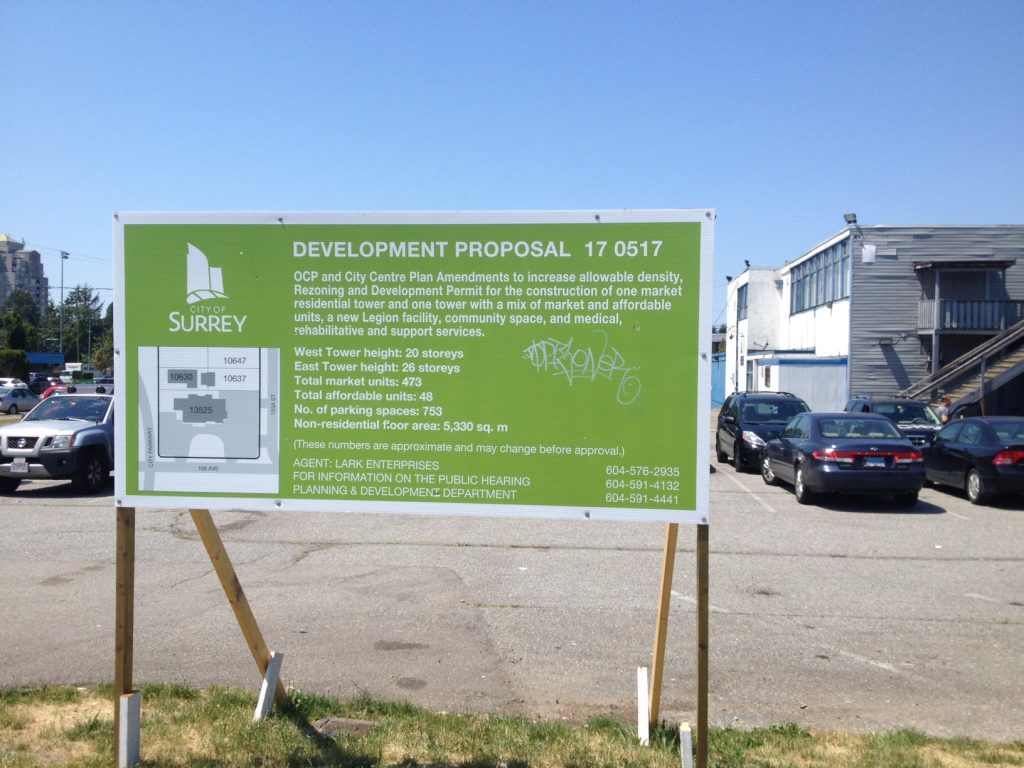

Politicians are celebrating the news that the 135A “Surrey Strip” is going indoors as social workers have begun moving residents of the iconic 3 year old camp into 160 Atco trailer rooms. But homeless residents of the Strip and advocates with Alliance Against Displacement are not uncritically celebrating. They see the move as the beginning of a new strategy to sweep homelessness under the rug as part of the gentrification of Surrey Centre.
From prison camp to institutional cells

The Surrey Strip is sometimes referred to in media as a “tent city” but it is more accurate to call it an “outdoor prison,” says longtime advocate Dave Diewert, who is an organizer with Alliance Against Displacement. Diewert knows the difference because he has organized in support of tent cities in Maple Ridge, Vancouver, Abbotsford, and Nanaimo. “In tent cities, homeless people organize their own communities and create a place where they get respite from police harassment and surveillance,” he said as he stood on 135A. “The Strip is totally controlled by the RCMP. The police force homeless people to come here, where they constantly patrol tent-to-tent and do search-and-seizures.”
Police on the Strip enforce a double standard that treats homeless people as dangers to public safety and private property rather than part of the public that needs protection. The protection of homeless people’s belongings from theft is an example of this double standard. One homeless resident named Dan said, “Over the last few months I’ve been collecting things in order to move into this new housing. I got some clothes, some things for a kitchen – things to have a home. Then yesterday, while I was away from my tent, Bylaw officers came and took all my things. The police call us thieves but they are always stealing from us.” Dave Diewert analyzed his experience within the double standard of policing, “The police are not against stealing, they regulate who can steal and who can be stolen from. The police protect thieves who take Indigenous lands, and Bylaw officers who take homeless people’s belongings, and criminalize homeless people for scavenging what they need to survive.”
Diewert worries that moving the Strip indoors won’t lessen police control. “The 160 units of temporary housing is run under BC Housing’s supportive housing program, which means that it is highly controlled, monitored, institutional housing. Supportive housing providers have a track record of sharing surveillance of tenants with police, which means that people won’t get a break from the police-state conditions of the Strip when they move indoors.” Diewert says that while some residents of the Strip are glad to move indoors after being outdoors for years, others are cynical about the state-orchestrated initiative that is moving homeless people from a prison camp to institutional cells.
“Homelessness is going to be illegal”

Bonnie looking out at moving day from her tent on the Strip
Moving day started the morning of Tuesday June 19th with Bylaw officers closing each end of the street and outreach workers distributing bins to campers up and down the Strip. Bonnie, a long-term resident of the Strip said, “Bylaw officers told us that after the Strip is cleaned up, homelessness is going to be illegal.” Another resident of the Strip who overheard Bonnie said that an RCMP officer told him that after the 160 units are full, they will send the riot squad down the strip to clear out any tents that remain. Regardless of the truth of these statements, the fact is that officers are sending a message that after the orchestrated move is finished, RCMP and Bylaw will stop anyone from setting up a tent on 135A again.
This is a problem, Diewert explains, because the homeless people who are visible on the Strip are only the very tip of the iceberg of the homeless population in Surrey. The official homeless count from 2017 was about 600, but Diewert says, “the number is easily double that. To say there are 1,200 homeless people in Surrey would be a conservative estimate.” Early reports about moving day are using the number 172 as the number of people on the Strip, but Diewert does not know where this number comes from. “There is an impulse to count heads to ask where the 12 extra people are going to go, but the whole premise is wrong – only about 1/10th of Surrey’s homeless are moving indoors today.” Surrey’s shift from containing homelessness in one visible place to hiding and repressing it by “making homelessness illegal” will mean increased punishment for all those who won’t fit into the token amount of trailer rooms.
Displacement by gentrification comes to Surrey Centre

Residents of the Strip have been awaiting the displacement of the camp for about a year now, Diewert explains. The so-called “Surrey Outreach Team” of intensive police patrols was created as a 2-year pilot project in December 2016, just before the City of Surrey passed an update to their City Centre Plan, including a plan to drop condos where the Strip is today. “The RCMP management of the Strip has been one-part containment, as they force homeless people they find elsewhere to come to the Strip, and one-part limiting numbers, as they closed one side of the street to tents and stop people from setting up in vacant lots,” Diewert said. He says that for the last year there has been a feeling that the days were numbered for the police-controlled camp. He believes, “The move into trailers is entirely motivated by a cleanup campaign for the gentrification of Surrey Centre.”
The new trailers do mean that 160 people will be able to sleep in beds, and will have access to showers and a sink and refrigerator. For those people, the trailers may feel like a huge relief after suffering in the snow, rain, cold, and blazing sun for 3 years under the boot of police. But, Diewert says, “it would be a mistake to make the narrative of the closing of the Surrey Strip about celebrating temporary housing for 1/10th of the people on the street. A good news narrative would cover up the truth that this is an escalation of the criminalization of homelessness; it is condo development profits over the lives of homeless people, it is sweeping homelessness under the rug.
